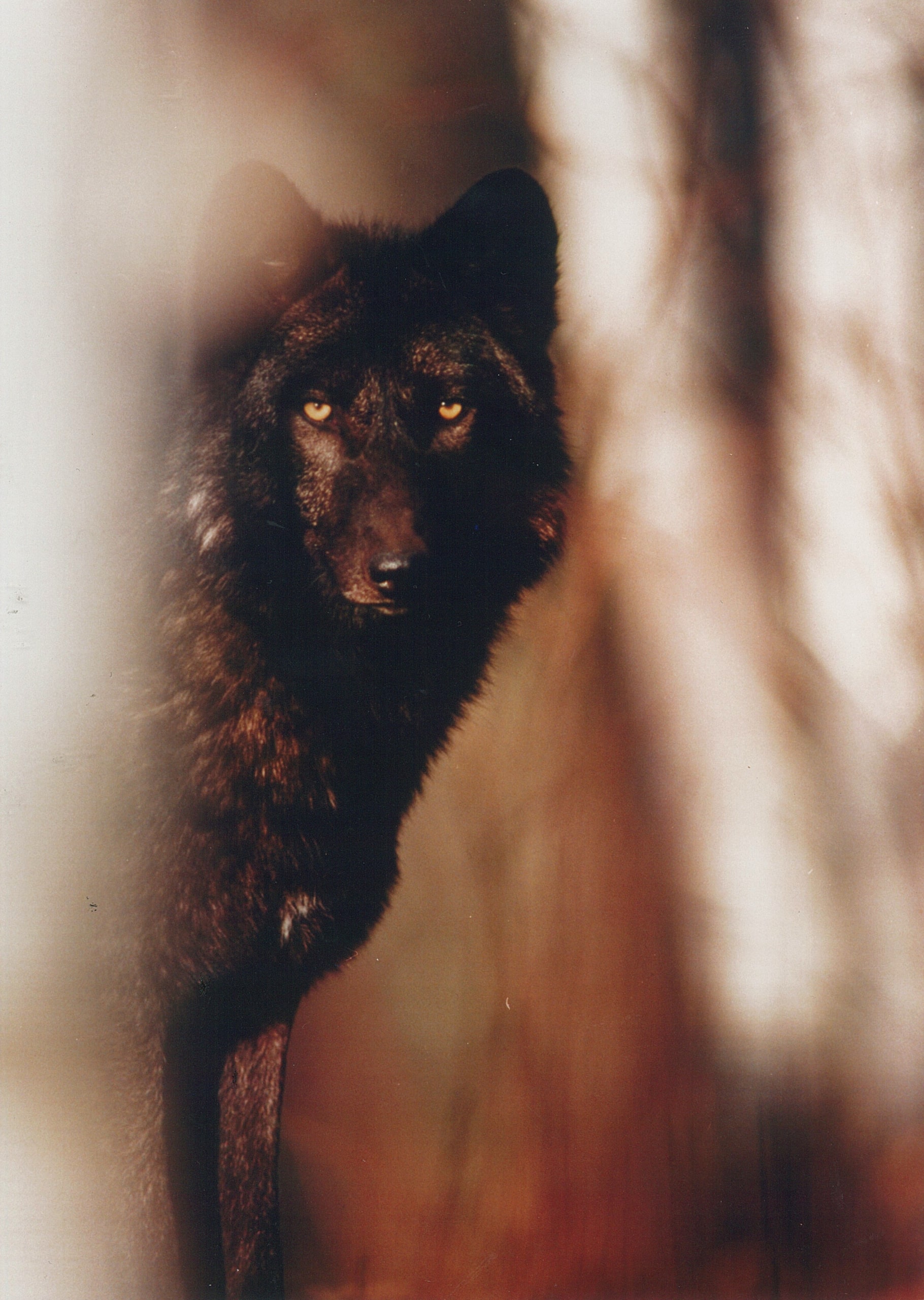
MacKenzie and the other 1993 pup mates, Lucas, Kiana, and Lakota, were born between April 17 and April 20. The source facility referenced the pups as being from different litters. On May 7, 1993, the pups came under the care of the Center’s wolf care team and were raised as a social group of pup mates. From the time she was a pup into her years in retirement, McKenzie, a black color phase of the gray wolf and, behaviorally, was the dominant female. As you can see from her photo, a T-1 tail (tail high over the back) is portrayed by a dominant personality. However, what was most impressive about a dominant personality was the willingness to adopt unrelated pups. In 2000, the Center adopted a pair of arctic pups, Shadow and Malik. It would be the first time in Center operations that pups were integrated with non-related adults to form a socially cohesive pack.
With all of our “Gone but not Forgotten” wolves, we select one word or phrase that characterizes the most memories about their life. For MacKenzie, we chose “Maternal.” While the wolf care team devised detailed protocols and plans for the August 2000 pup introduction, they were all focused on actions needed if the pups were too overwhelmed by the adults. The reality was that MacKenzie spent most of the introduction day (weeks and months) rolled upside down in a submissive posture, letting the pups climb all over her. It became clear early in the introduction that we would need a distraction for the pups to give the adults a rest. Fortunately, we discovered that non-related adults still hold true to a typical wolf pack behavior, letting the pups eat first. The first deer carcass feeding to the pups shortly after the introduction solidified the idea that wolves’ behavior is rooted in caring for pups. But, as with all wolf packs, young wolves mature and tests for status reveal vulnerabilities. As we watched the 2000 litter mature, we learned a valuable lesson. Seven years of age difference is too long for older wolves to maintain the youthful exuberance of maturing wolves.
MacKenzie had nearly six years of retirement before wolf care team members found her during a midday check on May 21, 2008. While her morning routine was normal, she had passed away under the shade of the towering pines in the East Side Retirement enclosure. A necropsy later indicated the cause of death to be a pulmonary embolism, showing no indication that she awoke from her resting place. MacKenzie taught us the lessons of respecting a dominant wolf’s need to psychologically let go of leadership, which made for a peaceful transition into retirement. In honor of her life, MacKenzie’s memorial funding legacy project was a secondary fence in the Pack Holding Area to allow for social space between Retirement and the Exhibit Packs.
For more information on our ambassador wolves, watch extended wolf videos on the International Wolf Center’s YouTube Channel or enjoy a close-up of wolf behavior on our Wolf Watch Cams.

The International Wolf Center uses science-based education to teach and inspire the world about wolves, their ecology, and the wolf-human relationship.
